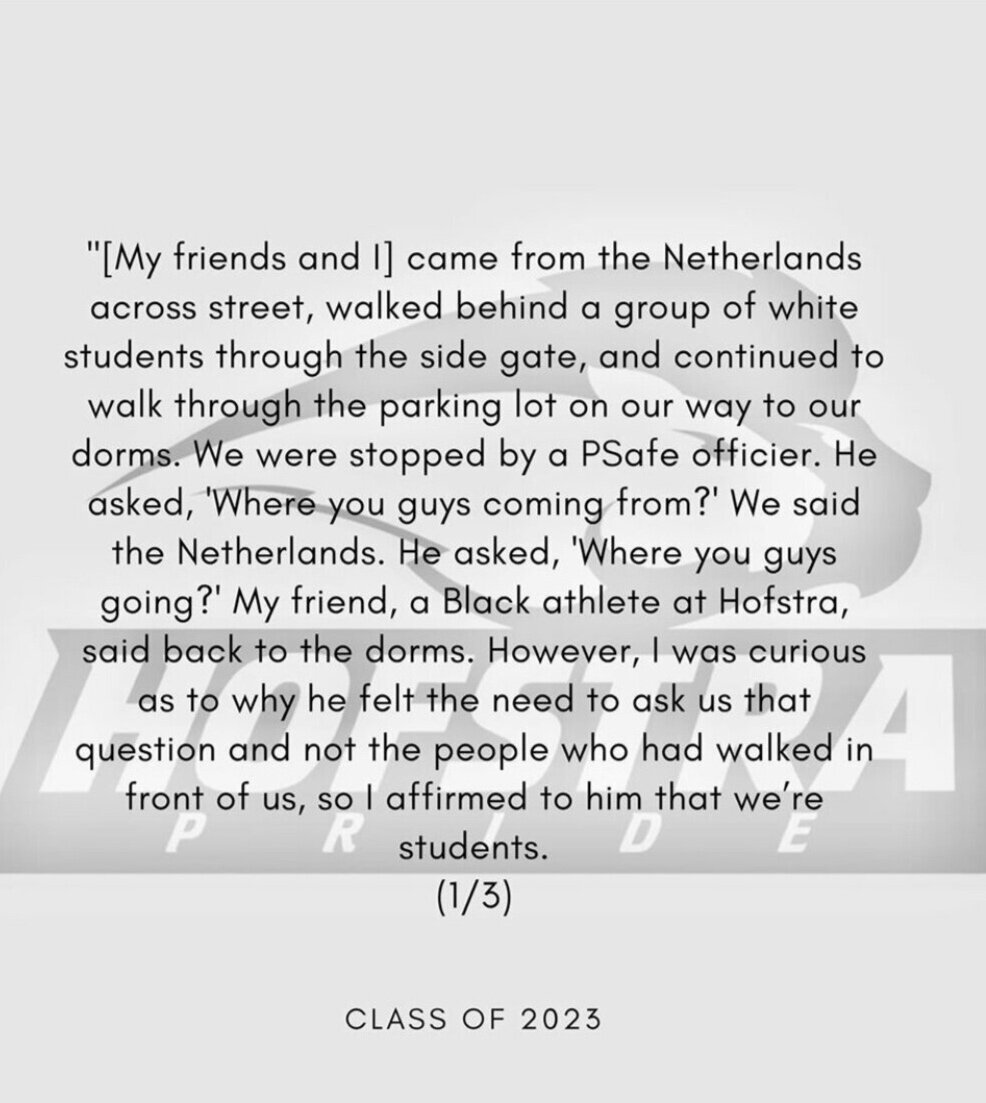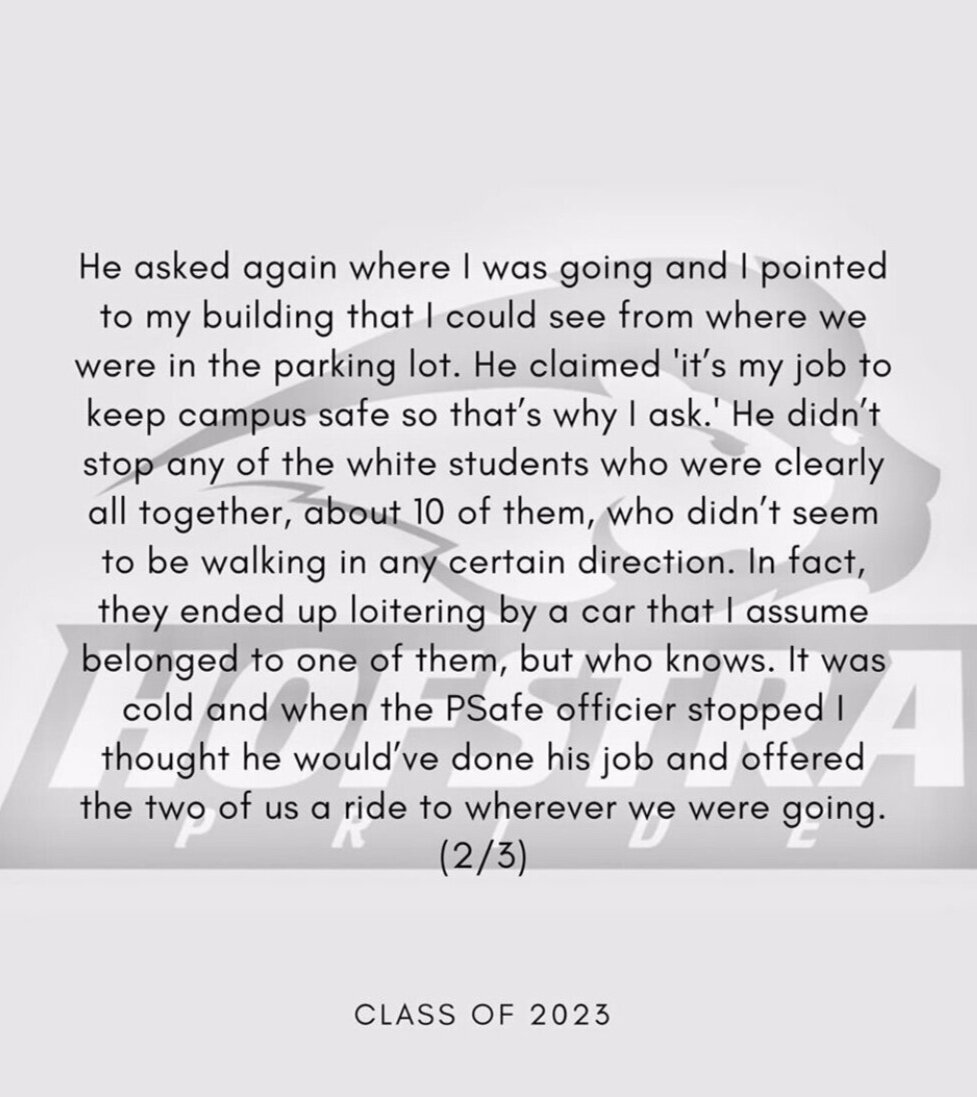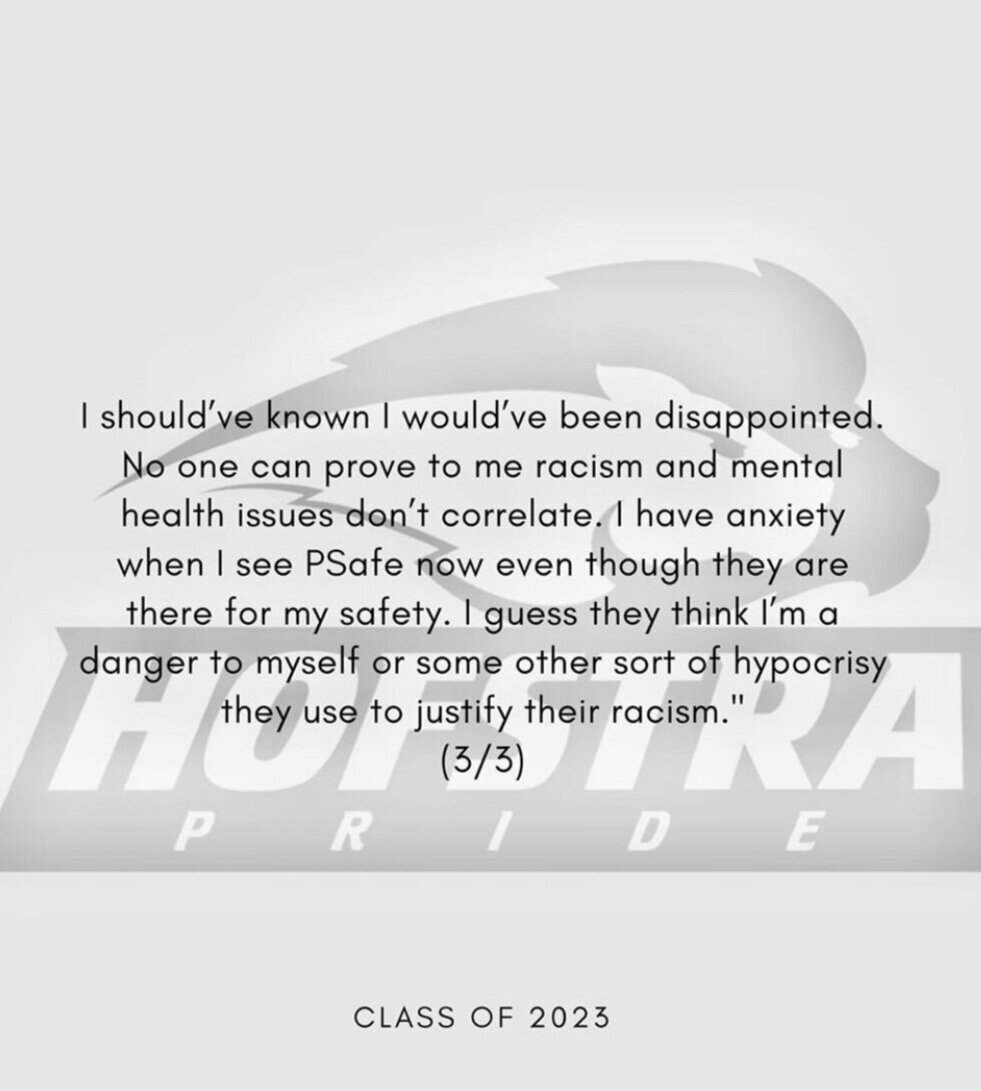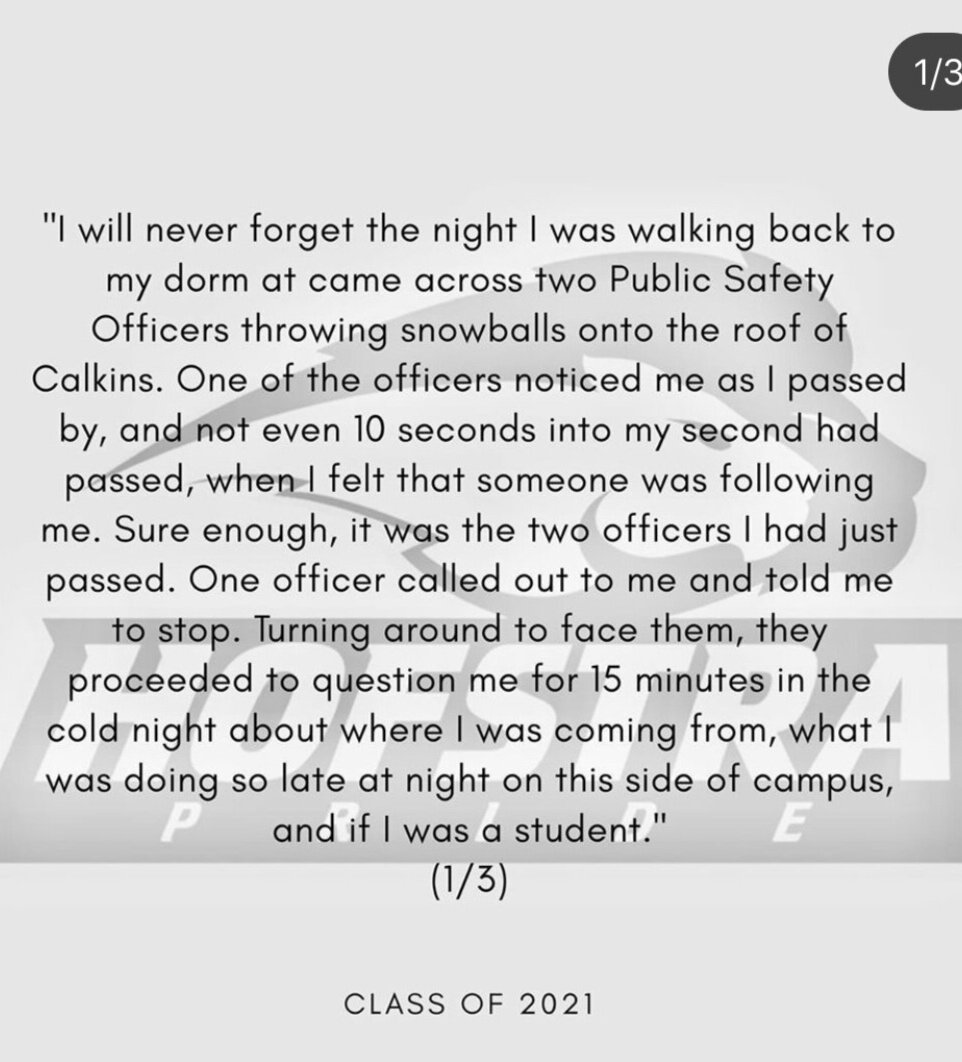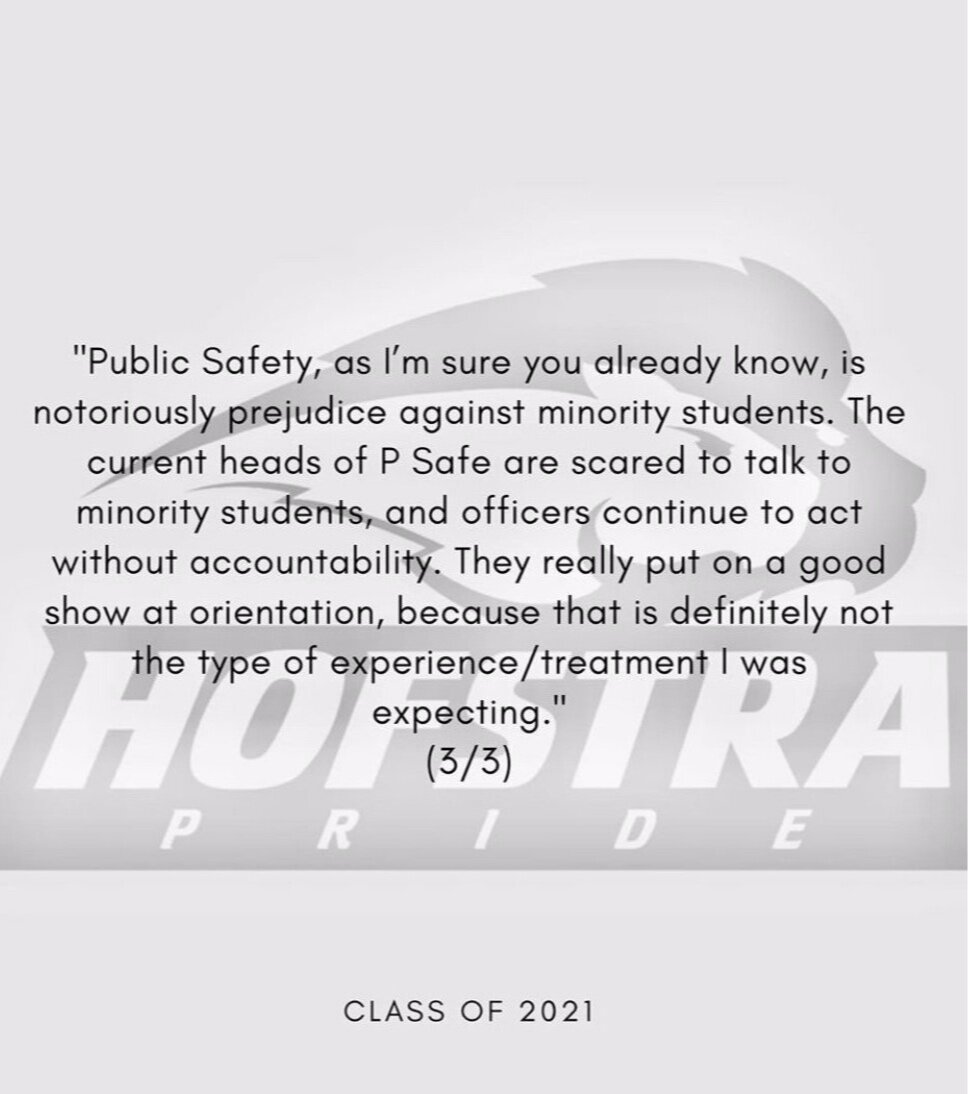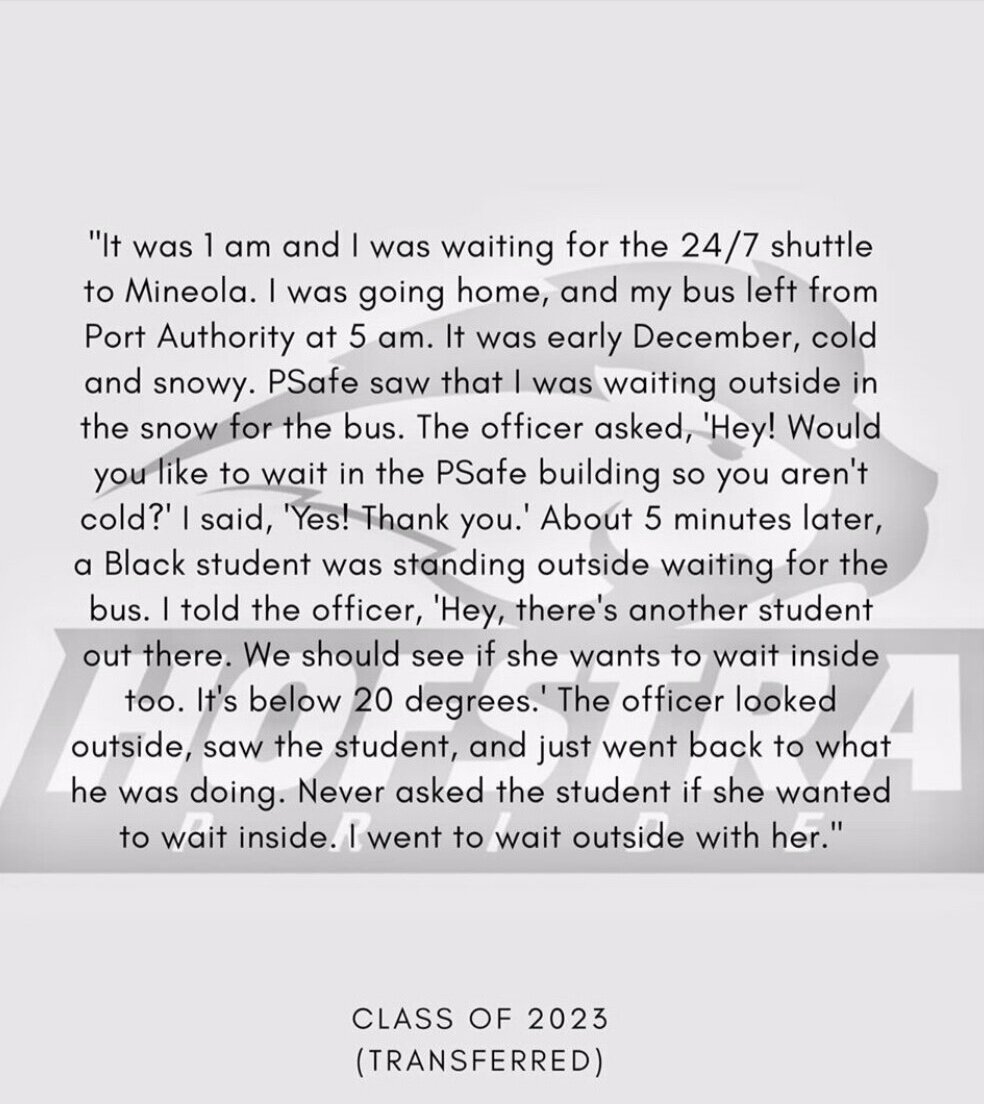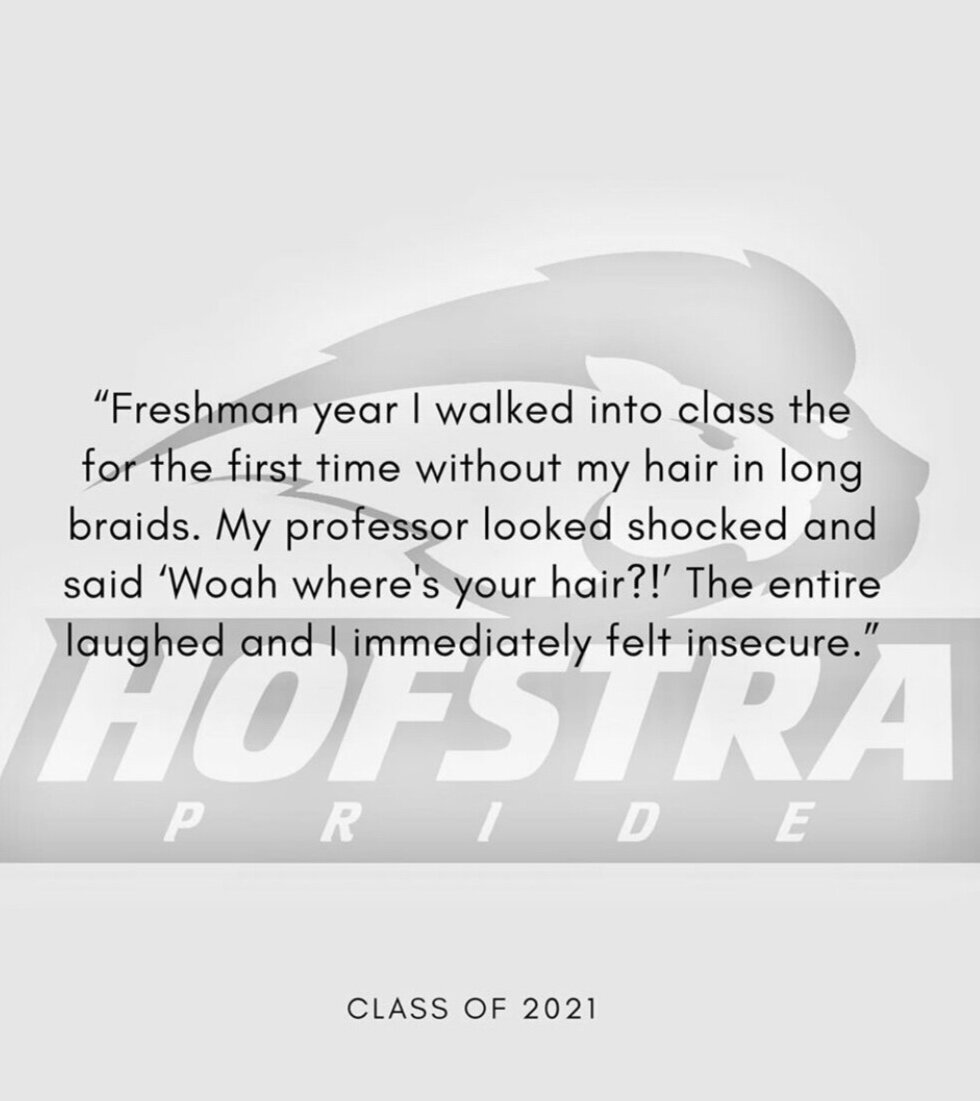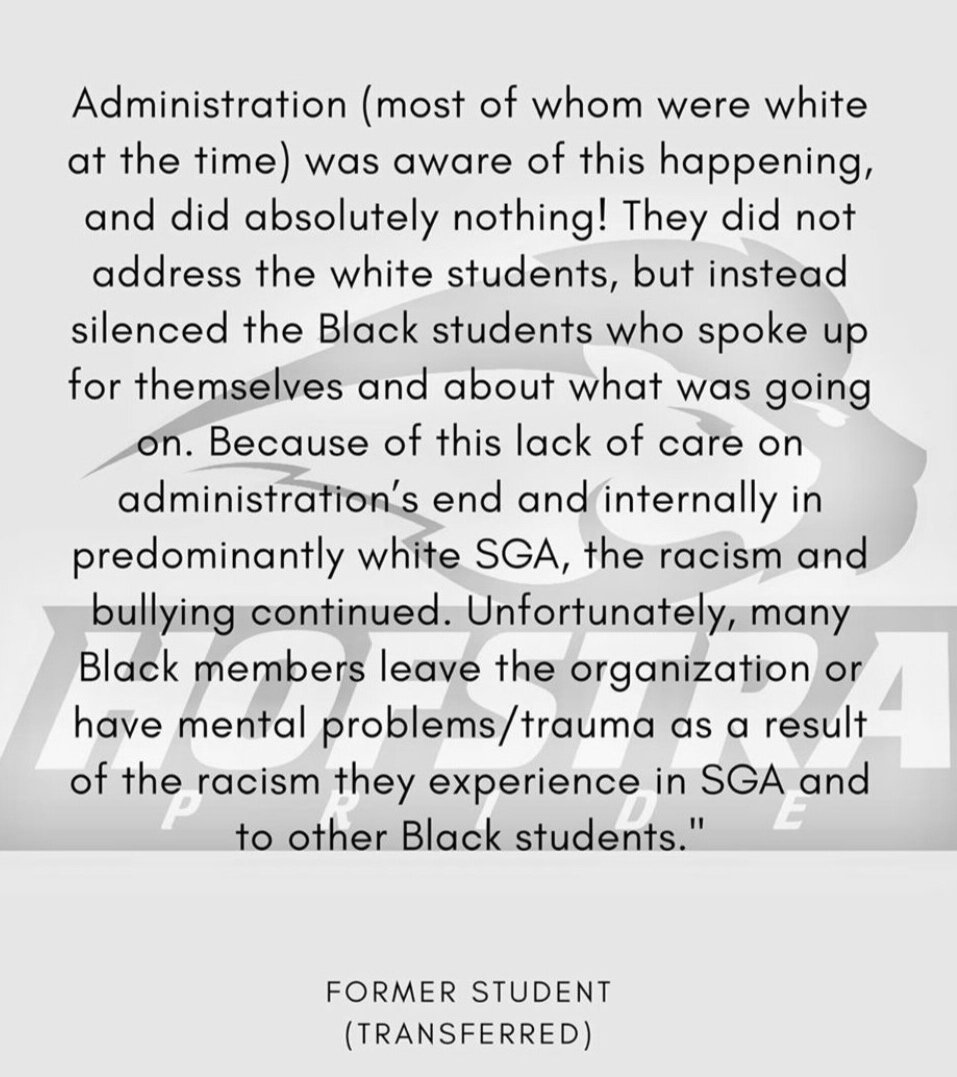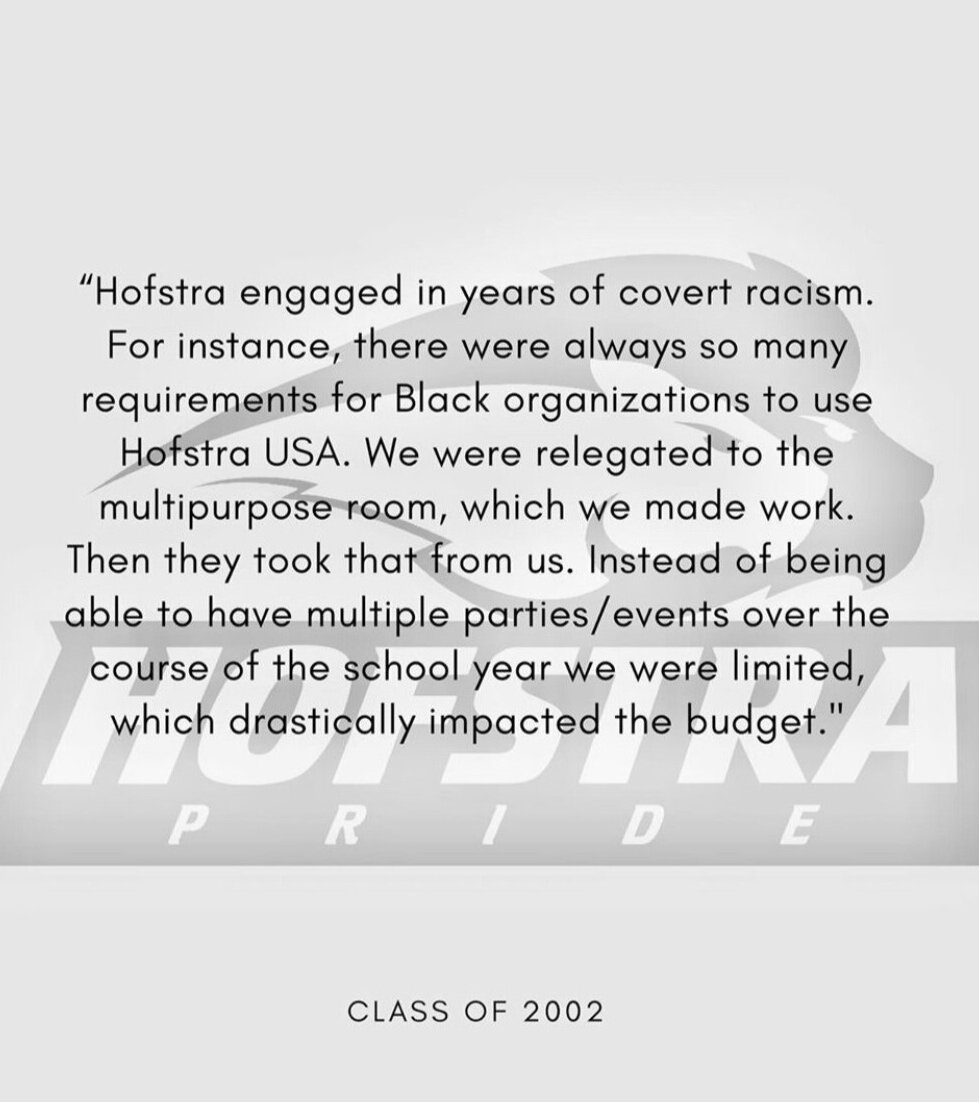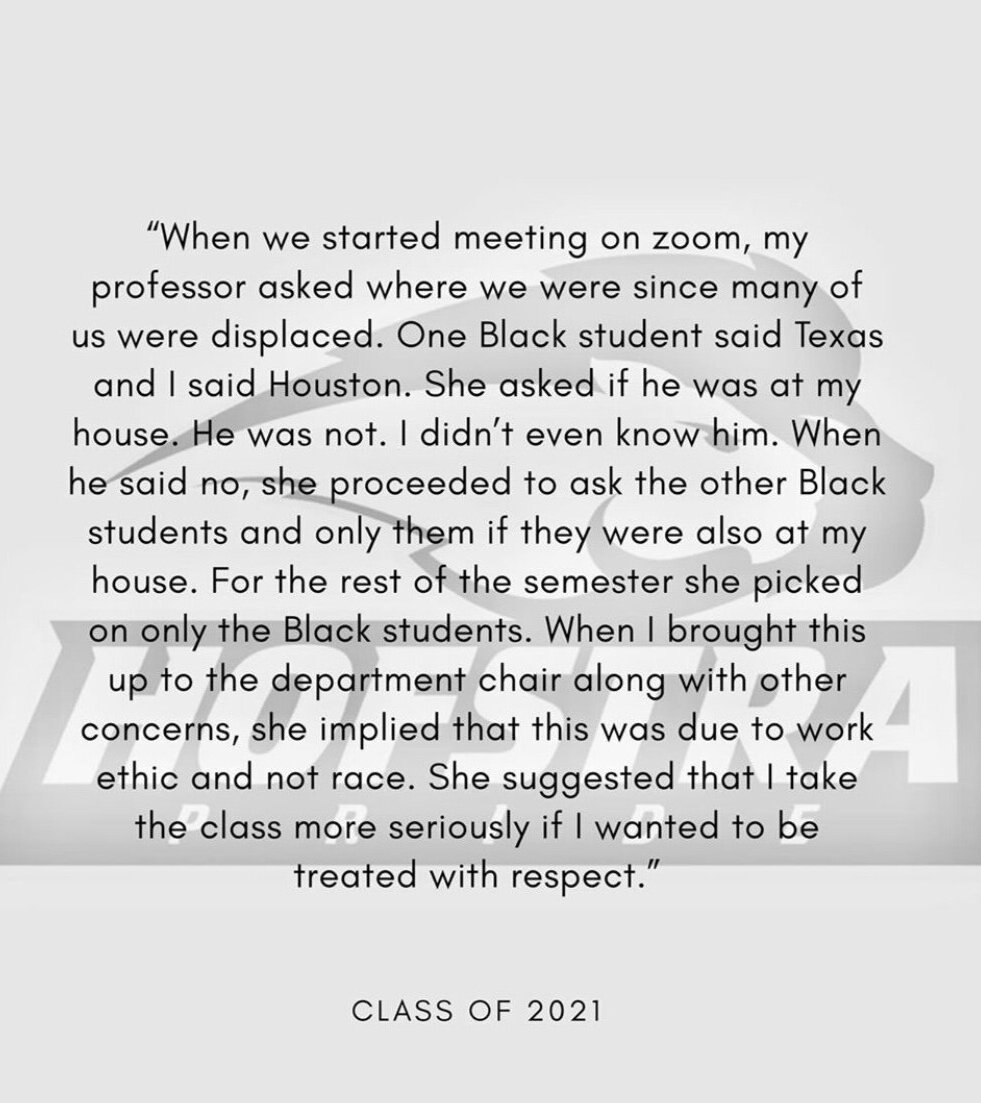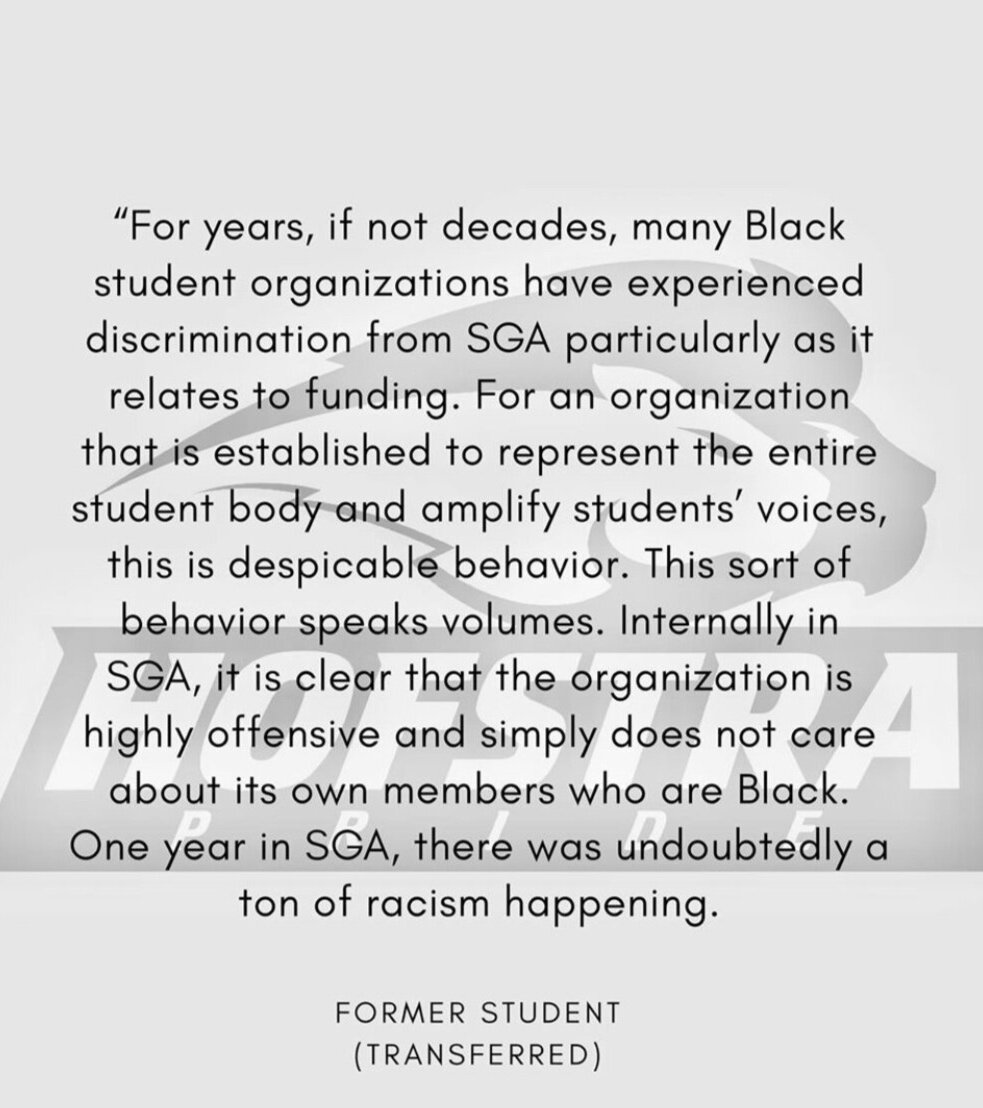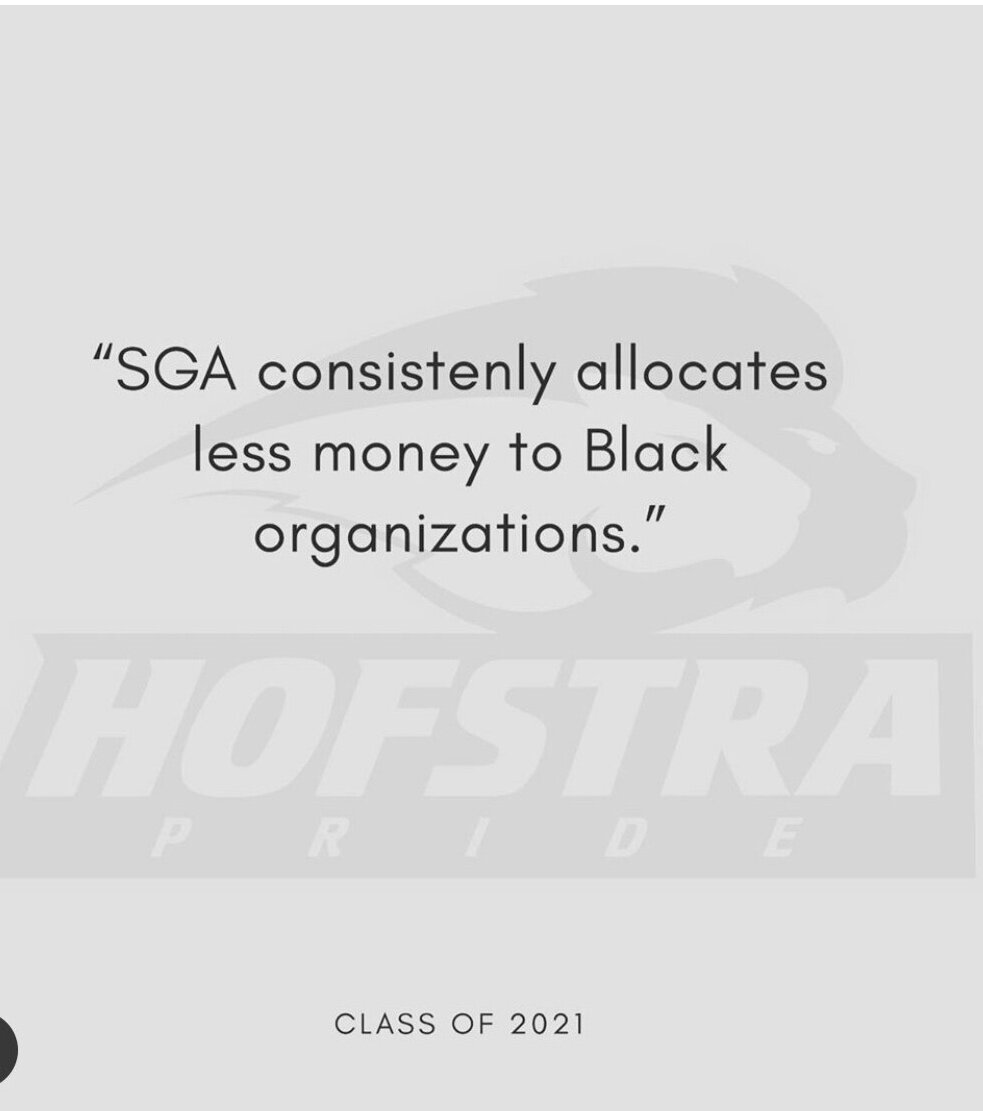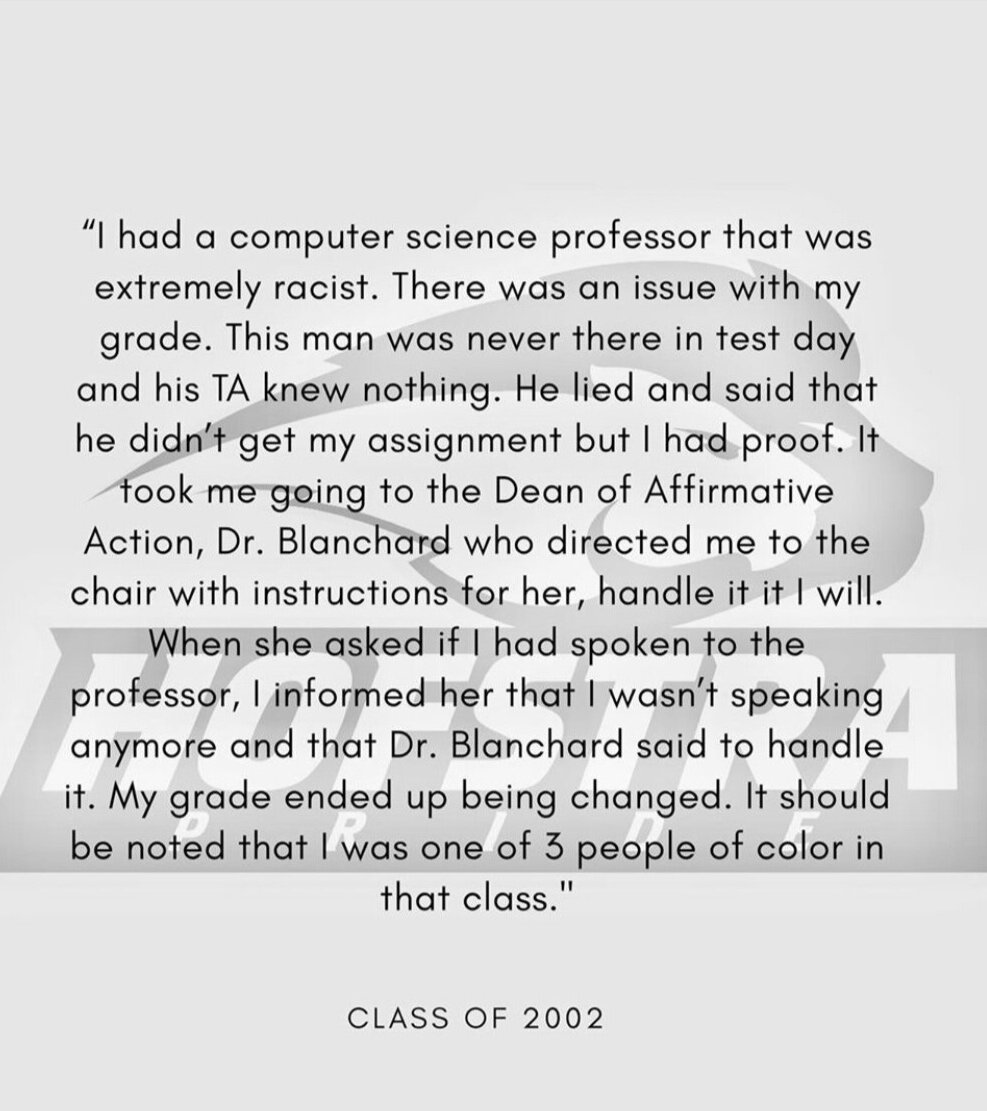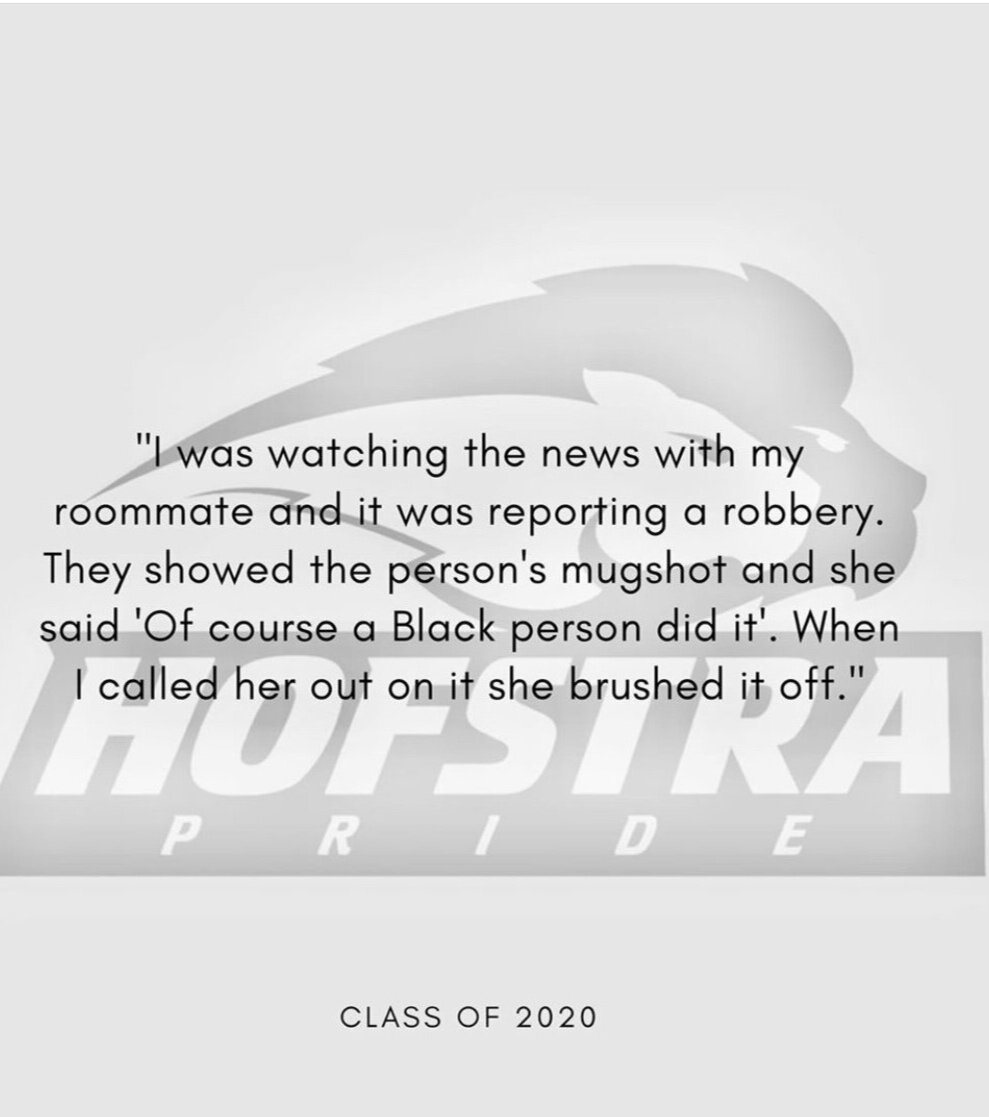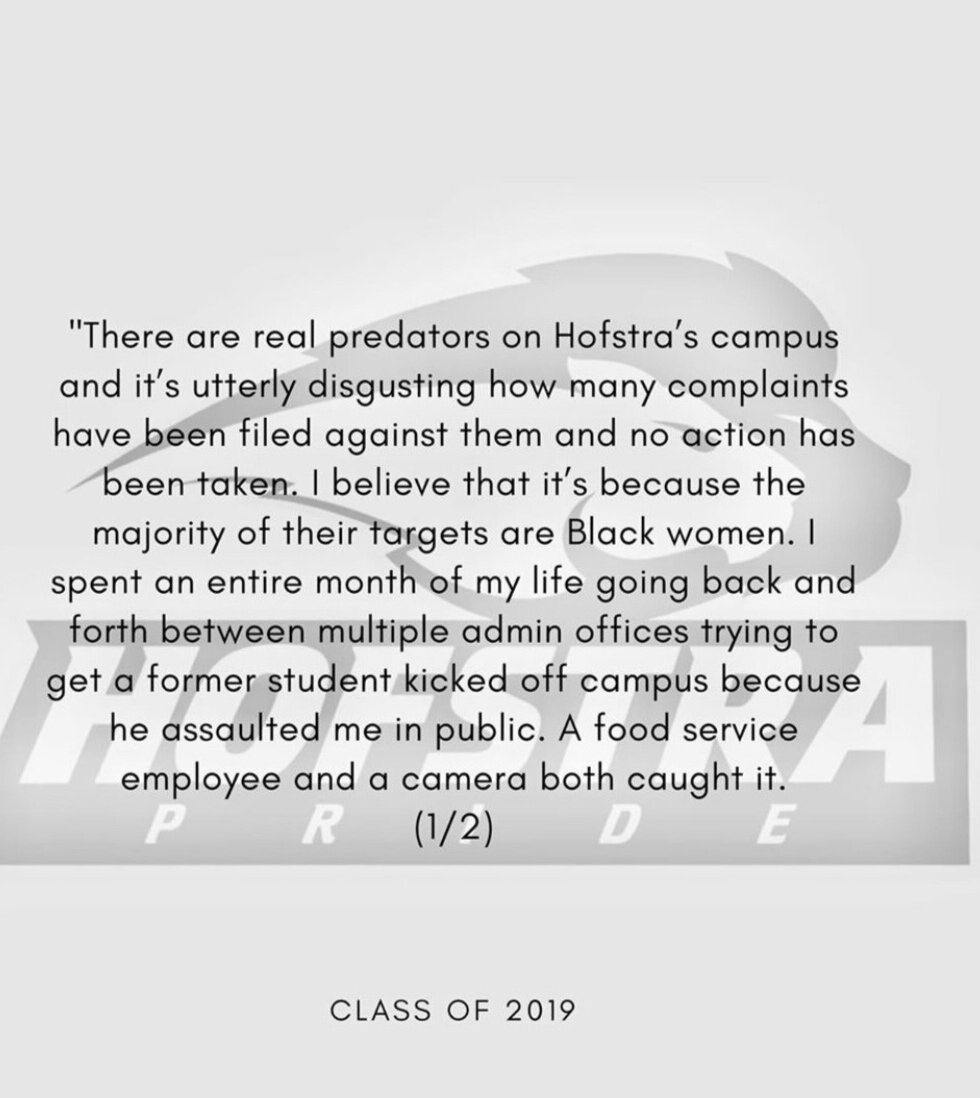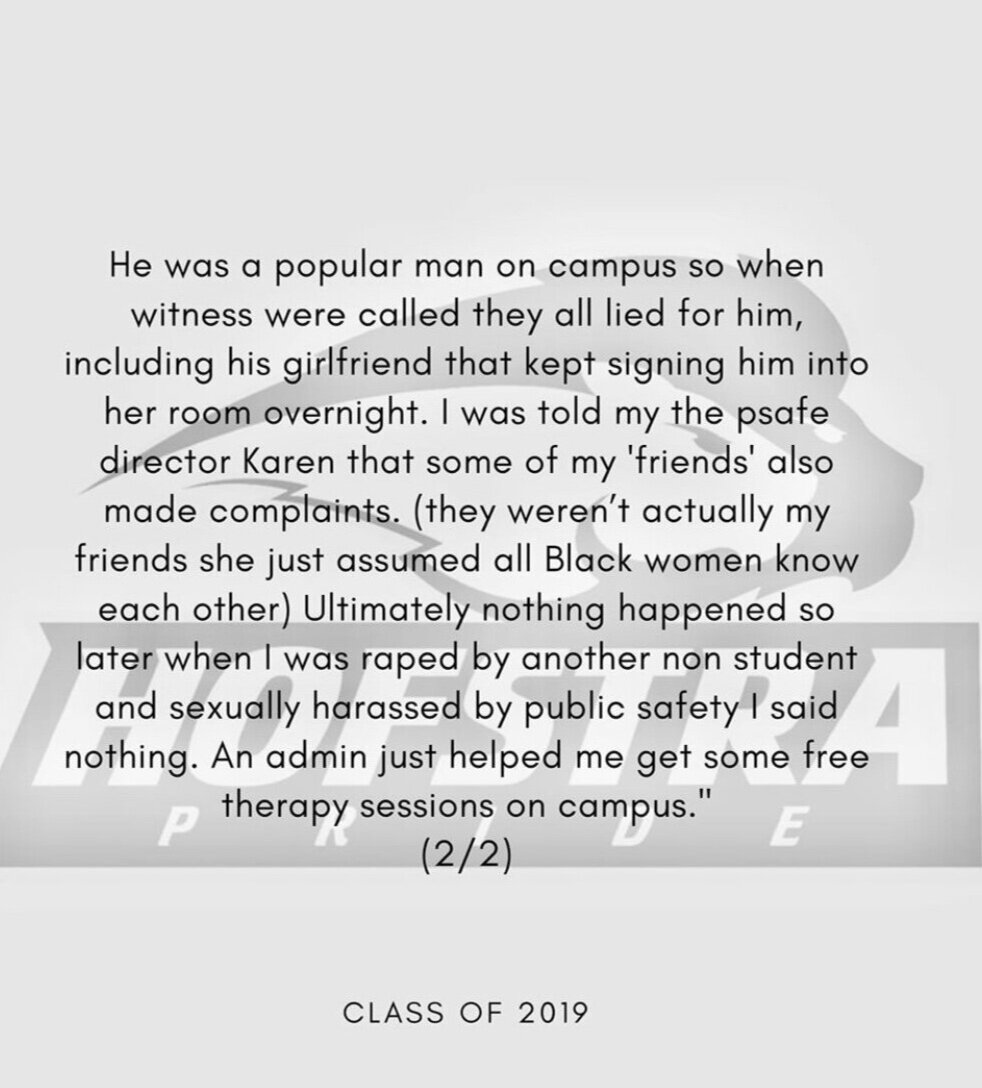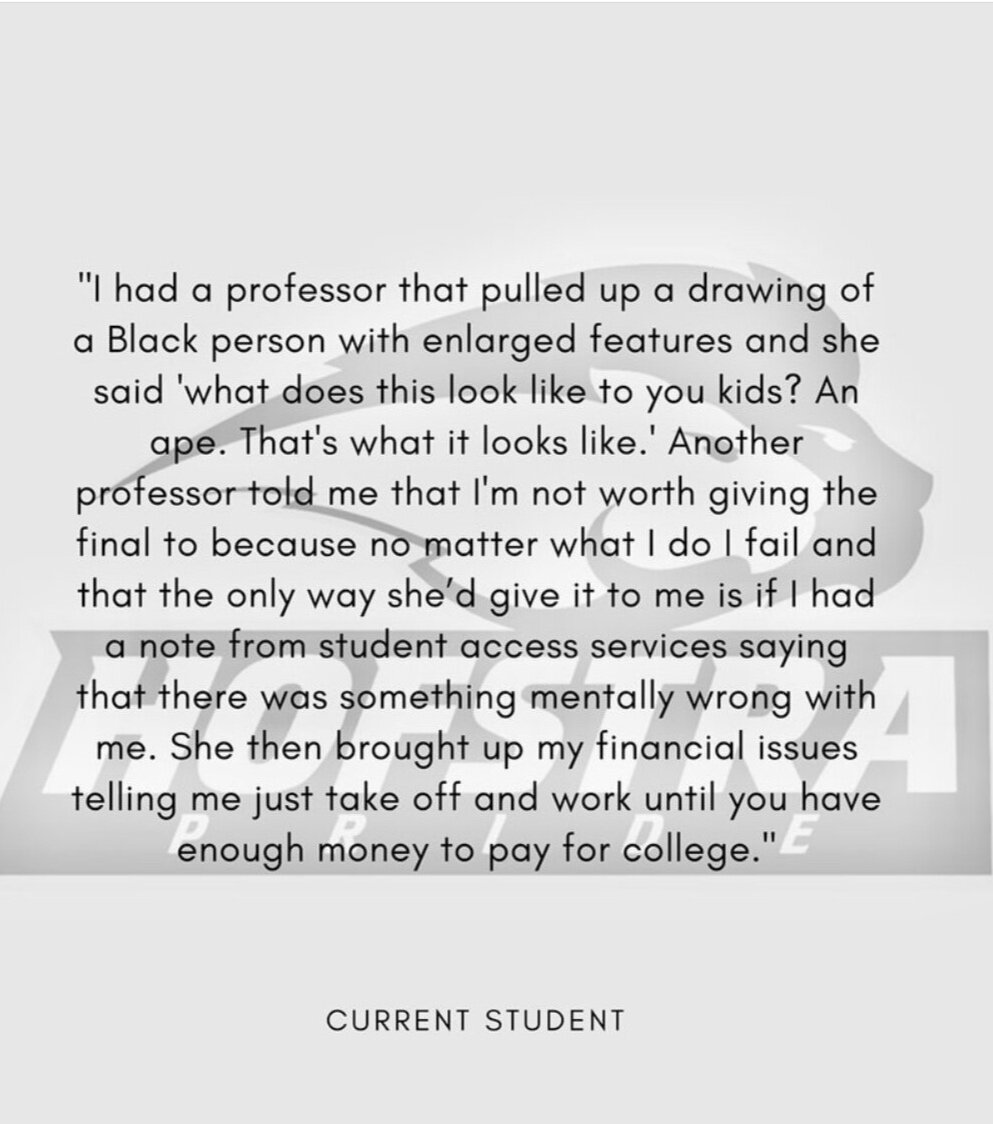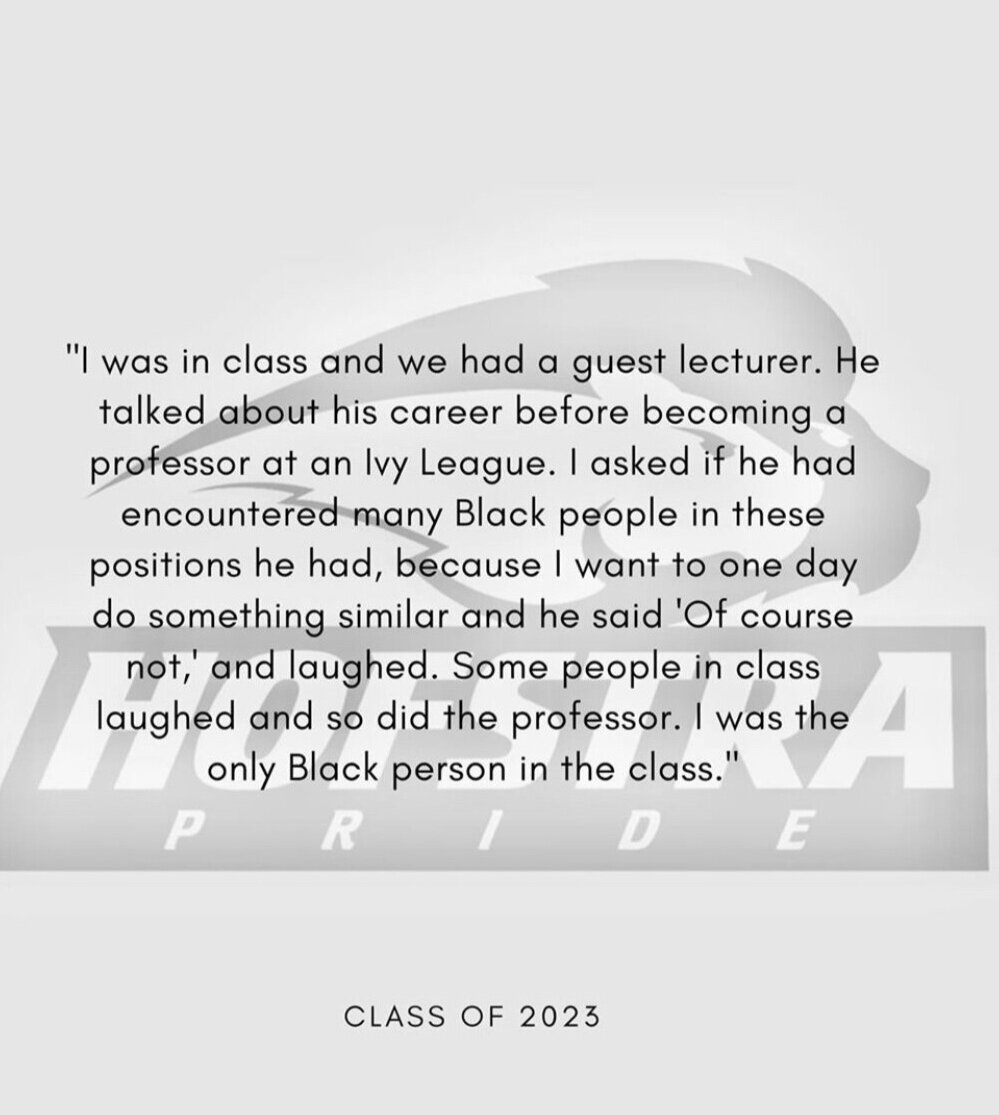Black education matters: Oppression in academia revealed through Instagram
Photo courtesy of Hofstra University
The subjects of this article have asked to remain anonymous. All quotes will be attributed by the use of they/them pronouns.
Photos courtesy of @blackathofstra via Instagram
The current human rights movement has shed light on institutions and fields that lack minority representation and equality, and academia is now at the forefront. Recently, activists have begun to create Instagram pages that allow students of color all over the country to share their experiences.
@blackathofstra, a page dedicated to amplifying Black voices at Hofstra University, went live several weeks ago and has since received over 30 submissions from students, tracing back to the class of 1972. The page gives current and former students the opportunity to anonymously share stories of the discrimination they have experienced on Hofstra’s campus. While each post is unique and disheartening, there are jarring similarities between all the posts as well.
So far, students have recounted the discrimination they faced from suitemates and professors. They have also discussed the prejudice they experienced when interacting with members of Hofstra’s administration, including the department designed to protect students: Public Safety.
For many Black students at Hofstra, their physical appearance is all it takes to raise suspicion from Public Safety. From a young age, Black kids are criminalized for behavior that would be considered unthreatening or a learning curve for white kids. As a result, the Black community has come to fear authority and law enforcement, as many of these figures continue to perpetuate the belief that minorities are a threat.
“I wanted [people to realize] that certain interactions are not just isolated incidents, but rather part of a pattern and that other students who are Black have those very similar experiences,” said the creator of @blackathofstra. “I also wanted students who are not Black to see that when a Black friend or a Black student or classmate talks about these experiences, that they're not exaggerating and that they’re not just making a big deal out of nothing, because microaggressions add up.”
The incidents detailed on the page are opening up a much deeper discussion on the inherent biases at predominantly white institutions (PWI).
Disproportionate allocations of funds, unjust grading and racial slurs said by faculty and staff are just a few of the recurring issues that Hofstra students face, and many of the students who have submitted stories say they are still waiting to receive the help they were promised.
The organizer of @blackathofstra has seen the initiatives that the Center for Civic Engagement, faculty of color and students alike have taken to implement systematic change, but they say the differences these initiatives have made are slim.
“I haven’t seen much change,” they said. “It kind of shows us how Hofstra has changed, but it really hasn’t as far as racial equity goes, because we have the Center for Civic Engagement, we have the [Center for "Race," Culture and Social Justice], we have [the New Opportunities at Hofstra Program] NOAH, but anti-Blackness on campus now [seems to be] more rampant than it was during the civil rights movement. And that’s really troubling to me.”
Education allows kids to explore different interests and build confidence within themselves. Yet, the U.S. education system is systematically biased against minorities, from public primary schools to private universities. And when it comes to reform, the burden of creating change often falls on people of color.
According to @black_education_matters, majority white schools at the primary and secondary levels receive up to $23 billion more in funding than schools serving predominantly BIPOC communities. The lack of funding, and therefore attention, widens the racial disparities in education.
Minority students are less likely than their white peers to attend an institution of higher education, and for many, the covert and overt racism they experience at predominantly white institutions (PWI), forces them to leave. At times, their departure encouraged by the very people meant to invest in their success: teachers. This is a large factor in why Historically Black Colleges and Universities have become a safe haven for Black students.
Much like healthcare professionals, law enforcement officers and public servants, it should be the duty of a professor to withhold personal biases. However, studies have shown that teachers possess the same biases toward minorities as non-teachers. A student’s academic and professional success is heavily influenced by their educator’s perception of them, and white educators have been found to have lower expectations for Black students. For a PWI like Hofstra University, this is a problem.
Academia is historically oppressive toward all minorities, not just BIPOC. The material used to teach history, including Black history, is often taught through a white male perspective. Instagram pages @blackgirlatpwi and @teachingwhileblackpwi reveal the turbulence Black women and academics face in these spaces. Breaking the glass ceiling is already difficult for women, and the intersectionality of being a Black woman creates a greater obstacle. Yet when there is a chance for the narrative to be told from the perspective of the oppressed, that responsibility again falls on BIPOC.
“Asking Black students to speak on behalf of Black people [in discussions of] racism or slavery, [or] calling on the Black student and asking their opinion is definitely [a] microaggression,” said the creator of @blackathofstra. “And [I am not obligated] to be subjected to hostility in a learning environment that I’m paying for.”
The term performative allyship has been used often to criticize superficial displays of solidarity from people and institutions alike. Many students have said that they do not want a deliberative dialogue or to simply be heard; they want action. They no longer want sympathy, but a documented and executed plan.
A team member of @blackcollegestories, another Instagram page that shares the stories of BIPOC students at universities nationally, said, “I think the first thing that [academic institutions] need to do is truly be there to listen, because I know that a lot of institutions have been saying, ‘We’re here to listen, we’re here and we’ll try. We’ll launch an investigation and try to mitigate what's going on,’ and often students never hear back.”
“And I actually think what’s really important about this is that the institution does the work, and not the Black students,” they continued. “We want to be treated fairly and that is your research to do, not ours.”
The experiences that have been shared through these pages are an indicator that academia needs to hold its professors to a higher standard regardless of whether they have tenure. Minority students want college administrators to take their feelings seriously, understand the implications of microaggressions and recognize the message they may be sending to their staff that it’s okay to hold prejudices. BIPOC students want their comfort and success, for once, to be valued more than the status quo. They want academia to act like their lives matter; and not just when those lives are being taken.




